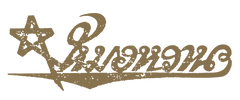Mowaan or Dr. Waan Rodmuang

Mowaan Rodmuang
Mowaan was born in 1870, during the reign of King Rama V. At that time, there were two types of Thai doctors: Moluang who treated the royal court, and Mochaleysak or common doctors who treated the general public. Even though Mowaan was a common doctor, he had the opportunity to treat Prince Dhevavong Varopakarn, the imperial chancellor of King Rama VI. He received a jewelry box from Princess Phichitjirapa Dhevakul, a daughter of Prince Dhevavong Varopakarn, as gratitude for treating his last illness.


The jewelry box that Mowaan received from Princess Pichitjirapa Dhevakul with a handwritten note on the inner box lid,
“For Mowaan with thanks for taking care of Father on his last illness "
Phichitjhirapa
3 August 66
Mowaan had his original store called Chalaew Thai Pharmacy, on Charoenkrung Road at Una Kannajup Intersection. In 1923, he informed customers that the pharmacy would be relocating to a new building on Bamrung Muang Road, one block away, with the new name of Bamrungchat Satsana Yathai.


แผนที่สมัยรัชกาลที่ ๕ บริเวณถนนเจริญกรุงตัดกับถนนอุณากรรณ ร้านจำหน่ายยาไทยตราเฉลว คือร้านที่ ๓ ถัดจากหัวมุม ตามที่หมอหวานระบุในเอกสารกำกับยา
ที่มาของภาพ: หน่วยวิจัยแผนที่และเอกสารประวัติศาสตร์สถาปัตยกรรม คณะสถาปัตยกรรมศาสตร์ จุฬาลงกรณ์มหาวิทยาลัย

 แ
แ
ปีพระพุทธศักราช ๒๔๖๖ นับเป็นปีที่มีความสำคัญอย่างยิ่งต่อหมอไทยจำนวนมาก มีการประกาศใช้พระราชบัญญัติการแพทย์ฉบับแรกขึ้น ด้วยความห่วงใยของภาครัฐที่มีต่อความปลอดภัยของอาณาประชาราษฎร์ ให้”ปลอดภัยจากการประกอบโรคศิลปะโดยผู้ที่ไร้ความรู้และมิได้ฝึกหัด" ผู้ที่จะประกอบอาชีพแพทย์ได้จะต้องมีประกาศนียบัตรและขึ้นทะเบียนขอใบอนุญาตจากทางการ จึงจะสามารถรักษาคนไข้ได้
 แ
แ
Medical Act, 1923

Although the Act had many advantages to medical and public health developments, it had a tremendous impact on many Thai doctors because of the ways of teaching traditional Thai medicine. Most of them were students following teachers. Someone interested in becoming a doctor must be mentored by a doctor who he believed in. He would follow and serve as an assistance until he had enough knowledge to become a doctor and treat patients. Therefore, most Thai doctors did not have a diploma or an academic certificate.
But due to the lack of resources available to them, the Thai traditional practitioners or common doctors who did not have a certificate immediately became outlaw doctors. Many practitioners were afraid of punishments. They did not dare to receive and treat patients. Some gave up the practice, some burned their notebooks.1 In this era, the word "Ya Phee bok" or ghost’s medicine became widespread which meant the patients were not to tell the police the name of the doctor.2
One year after the Medical Act was announced in 1923, Mowaan moved to the new Bamrungchart Sassanayathai building. He continued seeing patients and dispensing Thai medicine. He was knowledgeable in both Thai and Western medicine. Although it was a Thai pharmacy, the medical equipment was of the Western culture, such as stethoscopes, test tubes, distillation pots, alcohol lamps and extractors. There was no medicine chest in the store. All medicine was ready-made, ready for consumption and bottled, just the same as the imported Western medicine.

หูฟังเสียงหัวใจและปรอทวัดไข้ของหมอหวาน

อุปกรณ์สำหรับใช้ในห้องปฏิบัติการของแพทย์แผนตะวันตกของหมอหวาน

ยาไทยในขวดยาฝรั่งซึ่งนำเข้าจากต่างประเทศ

ขวดบรรจุสารสกัดและตัวยาแผนตะวันตก
Mowaan managed his pharmacy, Bamrungchart Sassanayathai, until his death in 1935. His daughter, Chuey Woraphok, a Thai traditional pharmacist, inherited the business.

Chuey Woraphok
In 1984, it was then passed on to the 3rd generation Thai pharmacist, Aura Woraphok who served at the Faculty of Medical Technology, Siriraj Hospital.

Aura Woraphok
The popularity of Thai medicine continues to decline as time changes. There used to be hundreds of ready-made medicines available, but now there are only four Yahom available. Mowaan’s pharmacy is still in thriving. In 2008, Phasinee Yanotai, the 4th generation heir, inherited the business.
 ภาสินี ญาโณทัย ทายาทรุ่นที่ ๔
ภาสินี ญาโณทัย ทายาทรุ่นที่ ๔
The Bamrungchat Satsana Yathai building still serves as a Thai pharmacy, inheriting the recipes and vision of Mowaan Rodmuang, preserving Thai medicine wisdom in the modern world and telling the history of a Thai pharmacy by being a community museum in Bangkok.
-------------------------------------------------------------
1 Associate Professor Prateep Chumpon “Influence of Western Medicine in Colonial Times and the Disaster of Thai Traditional Medicine” Physician Philosophy and Textbook of Traditional Thai Medicine. (Bangkok: Odeon Store 2013) page 68
2 Associate Professor Prateep Chumpon 2011 “The Dark Age of Intellectual Thai Traditional Medicine (Part 1)” (Online).
Suvarnabhumi people, https://mgronline.com/daily/detail/9540000042918
